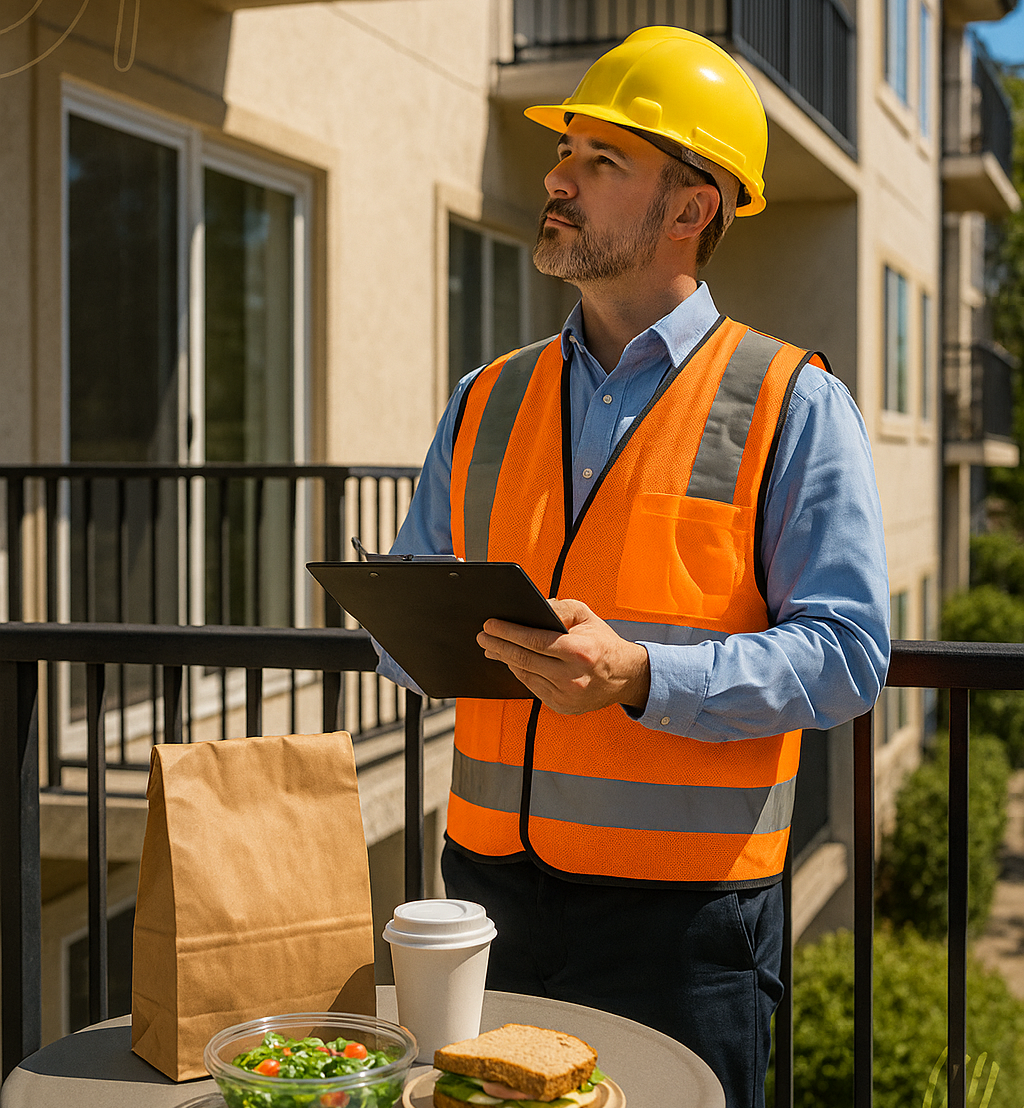Free Lunch & Learn: 2025 California Balcony Law Update
We’ll provide lunch. You’ll get clarity. Reserve a 45-minute, in-person briefing at your office or online on how to stay compliant with California’s new laws.

What You’ll Learn Over Lunch
- What California’s updated Balcony Law means for your properties
- Deadlines, documentation, and inspection types required under the law
- What happens if you don’t comply (insurance denial, fines, sale delays)
- How to schedule and pass your inspection with confidence
- Exclusive tools, checklists, and compliance tips tailored to your portfolio
What You Get With This Free Event
Boxed Lunches for Your Team
Delivered directly to your office for up to 10 people.
Live Q&A
Ask any compliance or property-specific question, no jargon.
Bonus Tools & 25% Voucher
Free pre-inspection checklist + inspection discount valid for 30 days.
10 Years After Berkeley… And It’s Still Happening
“In February 2024, another balcony collapsed—3 injured. Don’t wait for headlines to remind you.”
✔ Fines up to $500/day
✔ Refused insurance payouts
✔ Denied refinancing or sales
✔ Shared HOA liability lawsuits
👉 We help you avoid all that. Let’s get ahead of it together.
Frequently Asked Questions
With the first compliance deadline set for January 1, 2026, it’s tempting to wait. But acting early has its advantages:Avoid Last-Minute Chaos: Inspectors’ schedules fill up fast as deadlines approach.
- Avoid Last-Minute Chaos: Inspectors’ schedules fill up fast as deadlines approach.
- Plan for Repairs: If issues are uncovered during your balcony inspection, you’ll need time to address them.
- Save Money: Early detection of minor issues can prevent major, costly repairs.
- Stay Compliant: Procrastination can lead to non-compliance penalties, and no one wants that stress.
The sooner you schedule your balcony inspection, the more time you’ll have to ensure everything is up to standard.
Not just anyone can conduct a balcony inspection. You’ll need a qualified professional, such as:
- A licensed structural engineer or architect.
- A certified building inspector.
- A licensed contractor experienced in exterior elevated elements (EEEs), (A, B, or C-5) with at least 5 years’ experience constructing multistory wood frame buildings.
Ensure that whoever you hire understands California’s specific balcony inspection laws and has a track record of reliable, thorough work.
Repairs classified as “immediate action required” represent a real and present risk to life and safety. If a safety inspection reveals such issues, the inspector must notify the local building department and the building owner within 15 days of the inspection.
At that point, the building owner must inform tenants and prevent access to the area if needed.
The owner then has 120 days to obtain a building permit for the required repairs and an additional 120 days to complete the necessary repairs.
Not always. During a balcony inspection, professionals often inspect a representative sample of balconies, decks, and other elevated structures.
If the sample reveals widespread issues, the inspector may recommend a more comprehensive evaluation. It’s about ensuring safety without unnecessary disruptions.
The law requires inspection of at least 15 percent of each type of Exterior Elevated Element. This means not all elements will be inspected and the number of elements inspected will vary based on the total number of elements at each community. Elements are selected randomly using a validated random selection process. SB326 requires 95% of all exterior elevated elements to be inspected.
Frequency depends on the law governing your property:
- SB 721: Inspections are required every 6 years for apartment buildings.
- SB 326: Inspections for condominiums must be conducted every 9 years, with the first inspection required by January 1, 2025.
Staying on schedule not only ensures compliance but also helps catch and resolve issues before they escalate.
The decision is typically made by the licensed professional conducting the inspection. They’ll identify a sample of balconies and other EEEs based on:
- The property’s size and layout.
- The condition of the structures.
- Areas showing visible signs of wear or damage.
Their goal is to provide an accurate assessment while minimizing disruption.
Based upon the inspections, the inspector shall issue a written report containing the following information for each inspected element:
- The identification of the building components comprising the load-bearing components and associated waterproofing system.
- The current physical condition, including whether the condition presents an immediate threat to the health or safety of the occupants.
- The expected future performance and projected service life.
- Recommendations for any necessary repair or replacement of the load-bearing components and associated waterproofing system.
The written report must be presented to the Owner of the building within 45 days of completion of the inspection. If the inspector advises that the Exterior Elevated Element poses an immediate threat to the safety of the occupants, or that preventing occupant access or emergency repairs, including shoring, are necessary, then the report shall be provided by the inspector to the Owner of the building and to the local enforcement agency within 15 days of completion of the report.
